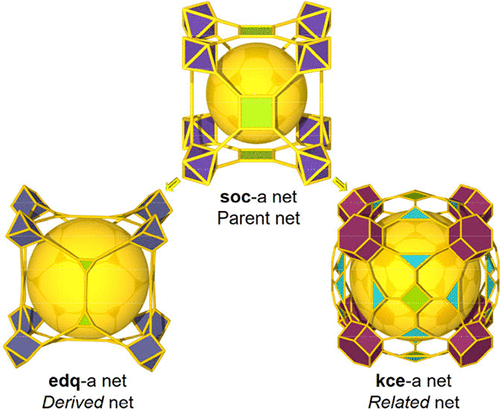

Reticular chemistry has proven as a notable/distinctive discipline aimed at the deliberate assembly of periodic solids, offering great opportunities to effectively deploy the gained knowledge on net-topologies as a guide and toolbox for designed syntheses, based on the assembly of molecular building blocks into targeted and anticipated structures of crystalline extended solids. The effective practice of reticular chemistry has enriched the repertoire of crystal chemistry and afforded notable accelerating development of crystalline extended frameworks, especially metal–organic frameworks (MOFs). Here, we review a special class of trinodal MOF structures based on the reticulation of special minimal edge-transitive nets (nets with transitivity [3 2], three distinct nodes and two kind of edges) derived from edge-transitive nets (one kind of edge). The rationale for deriving these special minimal edge-transitive nets is reviewed, and their associated net-coded building (net-cBUs) for the design of trinodal MOFs is presented and discussed. The resultant inclusive list of the enumerated minimal edge-transitive nets provides a unique toolbox for the material’s designer as it offers ideal blueprints for the deliberate design and rational assembly of building blocks with embedded multiple branch points into intricate trinodal MOFs.
